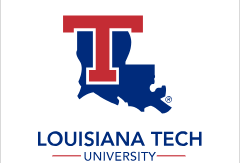Date of Award
Fall 11-19-2022
Document Type
Dissertation
Degree Name
Doctor of Philosophy (PhD)
Department
Materials and Infrastructure Systems
First Advisor
Shaurav Alam
Abstract
Studies conducted by the U.S. Department of Energy reported that heating and cooling systems use nearly 60% of the total energy consumed in a building, while approximately 31% of that energy loss occurs through the improperly insulated floor, walls, and ceiling. Hot summers or severely cold weather can make these problems worse. The passing of conditioned air through these building materials is a substantial source of energy loss, which has driven significant investigation into new environmentally friendly, sustainable, and cost-effective solutions. The main objective of the research was to experimentally evaluate the thermal conductivity of paints blended with halloysite nanotubes and with NO halloysite nanotubes, and its effects on the aging of paint used on coupon samples. The paint samples were used to prepare lab-scale coupon specimens and test them to estimate the magnitude of the thermal conductivity through different experimental studies by using TPS500 Hot Disk, Searle’s apparatus, and an I.R. camera. The physical properties of the paint samples were studied to investigate for any alteration. Lastly, material-level studies were conducted to find any change at the molecular level. This research work presents the development and performance evaluation of an innovative heat-insulating paint for use as a construction material. The suggested novel solution includes advanced VOC-free water-based paints blended with natural clay nanotubes (halloysites). The addition of halloysites, a low-cost, safe, and environmentally friendly material, will chemically improve paint quality and add good insulation, flame retardation, antibacterial, and anti-corrosion properties. The application of this altered paint is expected to upgrade the existing R-values of drywall materials. It will also reduce the construction costs associated with the current practice of drilling holes and backfilling standard wall structures with insulation material. This project measured the change in thermal conductivity values through the inclusion of halloysite materials and reported paints’ thermal insulation properties. Results from the proposed research are expected to support the availability of new cost-effective and highly durable paint products for construction industry environments. Further, this will generate green credits and meet current and future federal requirements for reduced carbon footprints.
Recommended Citation
Hashm, Hawa, "" (2022). Dissertation. 1044.
https://digitalcommons.latech.edu/dissertations/1044

